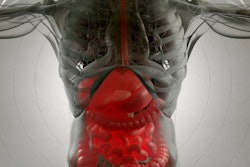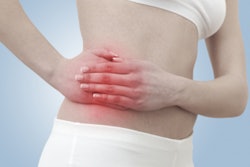
CT can be a valuable tool for diagnosing appendicitis, helping clinicians better manage the condition and enabling patients to avoid unnecessary appendectomies, according to a letter published June 20 in the International Journal of Surgery.
Even though CT exposes patients to radiation -- while typical appendicitis imaging such as ultrasound does not -- its benefits may outweigh this potential harm, wrote Dr. Cristian Angeramo of Hospital Alemán in Buenos Aires, Argentina.
"Overall, the current medical evidences and our experience indicate that ... increasing the use of CT in adult patients with atypical presentation of acute appendicitis or with negative ultrasound findings [results] in decrease in the number of unnecessary surgical procedures," he noted.
Acute appendicitis is a common reason for emergency surgery around the world, but diagnosing the condition can be challenging, according to Angeramo. Appendicitis is traditionally detected via clinical examination, abdominal ultrasound, and laboratory tests.
However, the performance of abdominal ultrasound varies, with a sensitivity range of 21% to 95.7% and a specificity range of 71.4% to 97.9%; it is also dependent on operator skill, and its results can be skewed in obese patients or those with bowel distention on presentation.
Studies have shown that when CT is used to diagnose patients with suspected acute appendicitis, the modality reduces negative appendectomy rates. Angeramo cited U.S. research that reported that 91% of patients who had preoperative imaging for appendicitis underwent CT and that the overall rate of negative appendectomy was 6%. In patients who had no imaging, the rate was 9.8%; in those who had ultrasound, it was 8.1%; and in those who had CT, it was 4.5% (Annals of Surgery, October 2008, Volume 248:4, pp. 557-563).
Yet whether CT should be used to diagnose acute appendicitis has remained a topic of debate, mostly because of patient exposure to radiation.
"Most guidelines for management of acute appendicitis recommend against routine use of CT," Angeramo wrote. "Instead, these guidelines propose performing a contrast-enhanced CT scan in patients with suspected acute appendicitis with negative ultrasound findings. Conversely, the American College of Radiology states that abdominal and pelvic CT scan with intravenous contrast is usually appropriate as an initial study to evaluate patients with both typical and atypical presentation of acute appendicitis."
In any case, the use of CT for diagnosing acute appendicitis is increasing, Angeramo noted. He and colleagues collected data from 2,009 patients who underwent appendectomy between 2007 and 2019. The group found a 10-fold increase in the use of CT for diagnosing acute appendicitis during this timeframe -- and a 13-fold decrease of negative appendectomies, demonstrating a clear association between use of CT and lower rates of unnecessary surgery (p = 0.001).
Angeramo conceded that using CT for this application may be difficult to implement, however.
"We are aware that this recommendation can be challenging in developing countries with limited medical personnel and technological resources," he wrote. "Future policy-makers in these countries should target accessibility to imaging studies to reduce the morbidities associated with acute appendicitis."





















